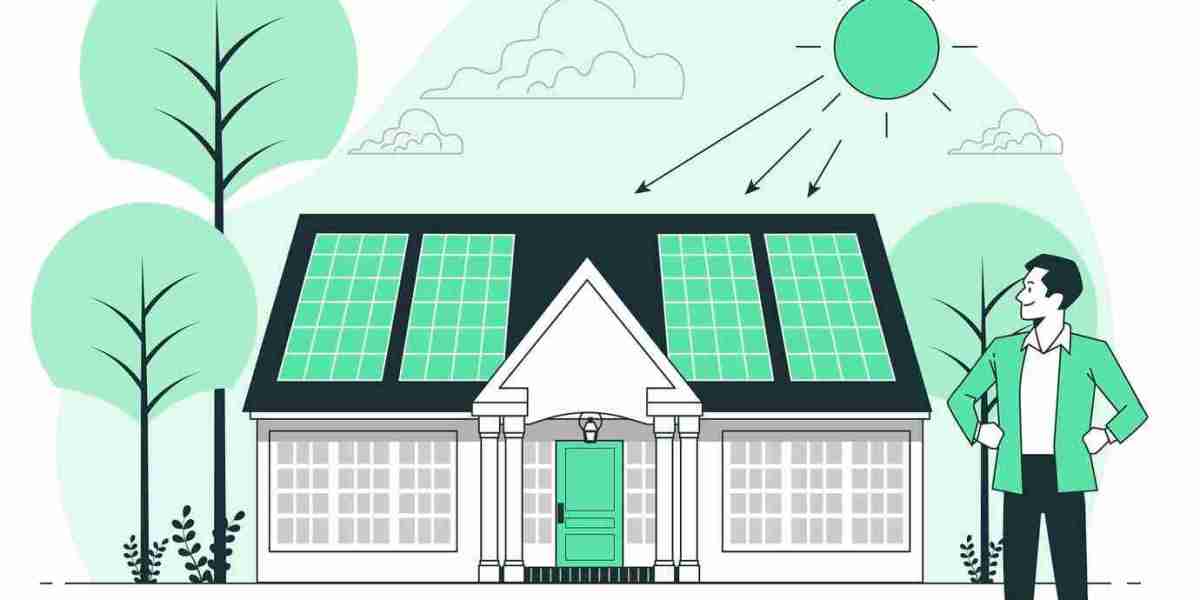The solar inverter market has seen significant growth over the past few years, driven by the increasing demand for renewable energy solutions, advancements in technology, and favorable government policies. As the world shifts towards cleaner energy sources to combat climate change, solar energy has become a key player in the transition to a sustainable future. Solar inverters, which are integral to the operation of photovoltaic (PV) systems, play a crucial role in converting the direct current (DC) generated by solar panels into alternating current (AC) used by households and businesses.
Market Growth and Trends
The solar inverter market has experienced rapid growth, owing to several factors. The global push for decarbonization, the declining cost of solar PV systems, and the adoption of clean energy policies in many countries have all contributed to this expansion. Governments worldwide have introduced incentives such as tax credits, subsidies, and renewable energy targets to accelerate the adoption of solar energy. As a result, the demand for solar inverters has surged, as they are a necessary component in every solar PV installation.
The market is expected to continue its growth trajectory, driven by technological advancements and increasing awareness of the environmental benefits of solar energy. The levelized cost of electricity (LCOE) for solar power has fallen significantly in recent years, making it one of the most cost-competitive sources of energy. This trend is expected to continue, further boosting the adoption of solar energy systems and, consequently, the demand for solar inverters.
Technological Innovations
Technological advancements in solar inverter technology have played a significant role in the market’s expansion. Traditional central inverters, which were once the standard in solar power systems, are being replaced by more efficient and flexible alternatives. String inverters, which allow for the use of smaller, more modular systems, have gained popularity due to their ease of installation and cost-effectiveness. These inverters offer better performance and lower maintenance costs, making them an attractive option for both residential and commercial applications.
Another key innovation is the development of microinverters. Microinverters are installed on each individual solar panel, converting DC to AC at the panel level. This eliminates the need for a central inverter and allows for greater system efficiency, especially in installations where panels may be shaded or oriented in different directions. Microinverters also offer greater flexibility in system design and improved monitoring capabilities, making them an appealing choice for residential customers who prioritize system performance and reliability.
In addition to microinverters and string inverters, hybrid inverters have emerged as a versatile option for users who wish to integrate energy storage into their solar power systems. Hybrid inverters combine the functions of both solar inverters and battery management systems, allowing users to store excess energy generated during the day for use at night or during power outages. This integration of solar power and energy storage is gaining traction as consumers seek more energy independence and resilience.
Market Segmentation
The solar inverter market can be segmented based on technology, application, and region. In terms of technology, the market is dominated by central inverters, string inverters, and microinverters. Central inverters are typically used in large-scale utility projects, while string inverters are more commonly found in residential and commercial installations. Microinverters, as mentioned earlier, are increasingly popular in residential settings due to their flexibility and efficiency.
Geographically, the market is most prominent in regions such as Asia-Pacific, North America, and Europe. Asia-Pacific, led by China and India, is the largest market for solar inverters, driven by rapid solar capacity installations and government support for renewable energy. China, in particular, is a dominant player in both the solar panel and inverter markets, as it is home to several leading inverter manufacturers. North America, especially the United States, has also witnessed significant growth in the solar inverter market, supported by favorable policies and an expanding solar industry. Europe, with its ambitious renewable energy targets, remains a strong market for solar inverters, with countries like Germany, Spain, and Italy leading the charge.
Challenges and Opportunities
While the solar inverter market is growing, there are several challenges that need to be addressed. One of the main challenges is the cost of solar inverters, particularly in regions where the adoption of solar energy is still in its early stages. Although the prices of solar panels have dropped significantly, the cost of inverters remains relatively high, especially for advanced technologies like microinverters and hybrid inverters. However, as manufacturing processes improve and economies of scale are achieved, prices are expected to decrease over time.
Another challenge is the need for continuous innovation to keep pace with the evolving demands of the solar industry. The growing integration of energy storage systems, smart grids, and electric vehicles into the energy ecosystem requires solar inverters to become more intelligent and adaptable. The development of inverters with enhanced grid compatibility and better monitoring capabilities will be crucial to maintaining the momentum of the market.
Despite these challenges, the solar inverter market offers numerous opportunities for growth. The increasing demand for clean energy, the rise of residential solar installations, and the expansion of energy storage solutions are all key factors that will drive the market forward. Furthermore, the ongoing development of smart grids and the growing trend of distributed energy generation present new opportunities for inverter manufacturers to innovate and create more efficient, flexible, and cost-effective solutions.
Conclusion
The solar inverter market is poised for continued growth, driven by technological advancements, increasing demand for solar energy, and favorable government policies. As solar energy becomes an integral part of the global energy mix, the need for efficient and reliable inverters will only increase. With the development of new technologies such as microinverters, hybrid inverters, and smart grid-compatible solutions, the solar inverter market is set to play a crucial role in the transition to a more sustainable and decentralized energy future.



